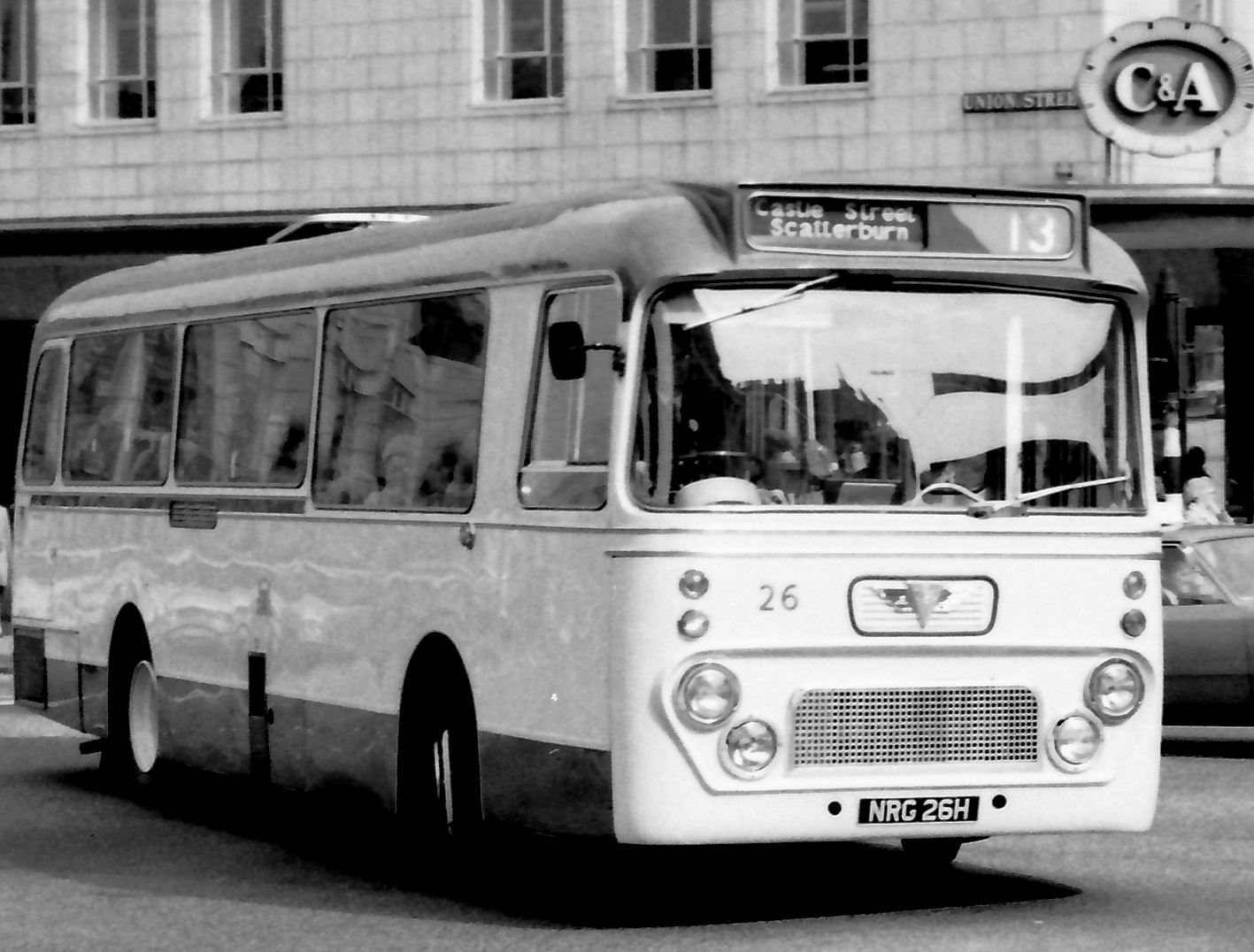Photo kindly donated by Robert McGillivray.
The History
There was another change in Construction & Use regulations in 1961 whereby the maximum length for both single deck and double deck buses was extended from 30’0” to 36’0”. A consequence for single decker’s was that there was now sufficient overhang behind the rear axle for a longitudinally mounted underfloor engine, and, having moved the engine to the back, the floor of the saloon in front of the rear axle could be lowered. The saloon floor levels of underfloor engined buses were particularly high and although there was no legislation at this time to regulate matters relating to access to buses by mobility handicapped passengers, it was appreciated that reducing step heights was beneficial.
The AEC company’s response was to offer the rear engined AEC Swift chassis, and between 1968 and 1972 Aberdeen Corporation bought 3 batches of these totalling 37 vehicles. All were in support of the Corporation’s conversion of the network to driver only operation – double decker’s for driver only service were still being debated by the industry and in the meantime long single decker’s crush loaded standing passengers were favoured. The chassis, and the saloon floor, of the Swifts were on two levels with a distinct step between the two, and although the front section was at a lower height there were still steps at the two exterior doors. The driving position on the first batch was also at a low height (AEC Chassis type MP2R), but in the later batches the driver’s seat was raised (AEC Chassis type 2MP2R). A visible consequence was that a different front panel and windscreen had to be used on the two later batches. All three batches had the same engine, semi-automatic gearbox and air brakes.
The Aberdeen Swifts were c33’0” long (10m), part acknowledging the difficulties of manoeuvring long buses through the narrow streets in the suburban housing schemes – power steering was still some years into the future. All had Alexander of Falkirk ‘W Type’ steel framed dual door bodywork with seats for 43 passengers and could take 20 standing passengers.
• ACT 22 was in the first batch of deliveries received in June 1968 and was sold out of service in 1980 to Aberdeen District Council’s Department of Leisure, Recreation and Tourism, being used latterly as a mobile changing room. This bus was acquired for preservation in 1997.
• ACT 26 came in the second batch of deliveries in September 1969 and went to Aberdeen District Council in 1981. It was acquired for preservation in 2001
• ACT 56 was in the third batch, arriving in the city in January 1972 and, a mere seven years later, was sold to a Yorkshire bus dealer who passed it on to a dealer in Hampshire. It was used by military cadet forces in the London area until 1986, then, following another period in the hands of dealers, 56 came back to Aberdeen to the care of Grampian Regional Transport Ltd in1988.
All the AEC Swifts were replaced by twin door Leyland Atlantean double decker’s; crush loading/ standee single decker’s were none too popular with passengers.

